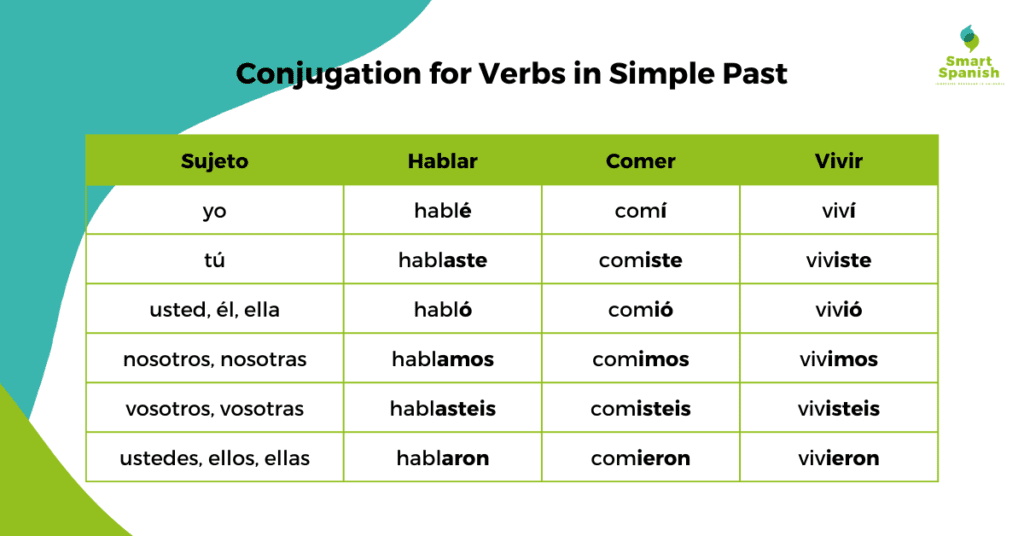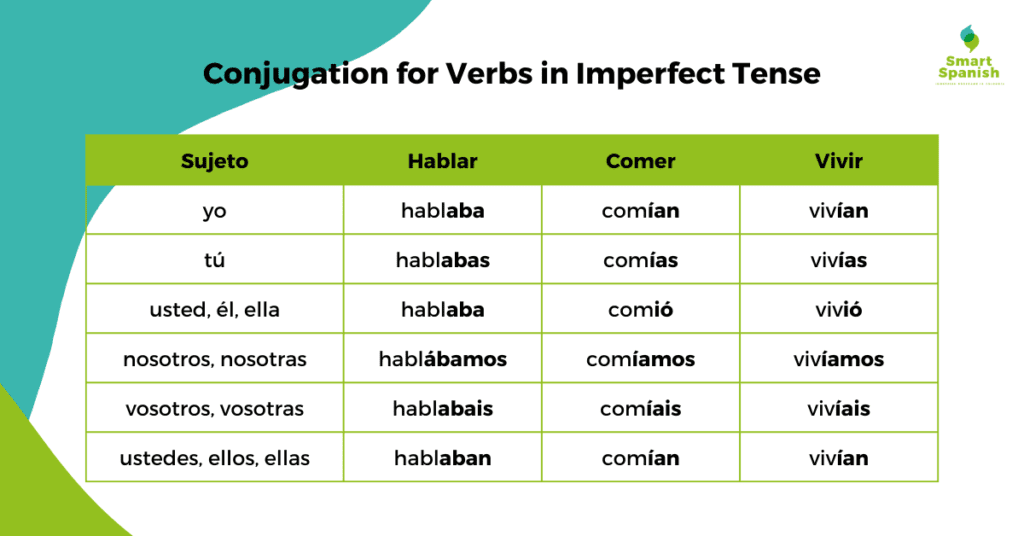Preterite vs. Imperfect in Spanish
Navigating the world of Spanish verb tenses can be a challenging task, especially when it comes to distinguishing between the preterite and imperfect tenses. These two past tenses often leave learners scratching their heads, but fear not! In this comprehensive guide, we’re going to break down the differences between the preterite and imperfect in Spanish and equip you with the knowledge to wield these tenses with confidence.
Preterite Tense: Snapshot of the Past
The preterite tense, often referred to as the “simple past”, or “indefinido” is like a snapshot of a specific past action. It’s used to describe completed actions with a clear beginning and end. These actions are typically isolated events that happened once, leaving no room for ambiguity.
Usage Examples:
- Ayer comí paella. Yesterday, I ate a delicious paella.
- Ella visitó Madrid el verano pasado. She visited Madrid last summer.
When to Use the Preterite:
- Specific Time: When the action took place at a precise moment in the past.
- Ayer salí temprano de casa. (Yesterday, I left home early.)
- El año pasado, compramos un coche nuevo. (Last year, we bought a new car.)
- Completed Action: For actions with a clear start and finish.
- Ana terminó su presentación a tiempo. (Ana finished her presentation on time.)
- Mis amigos y yo cenamos en ese restaurante la semana pasada. (My friends and I had dinner at that restaurant last week.)
- Interrupted Action: When one action interrupts another.
- Ella estudiaba cuando su hermano entró en la habitación. (She was studying when her brother came in the room.)
- Mientras leía, sonó mi teléfono. (While I was reading, my phone rang.)
How to conjugate verbs in preterite:

Imperfect Tense: The Painted Background
The imperfect tense is your go-to when you want to set the scene, providing context to the past. It’s used for actions that were ongoing, habitual, or had no definite endpoint. Think of it as the painted background that adds depth to the narrative.
Usage Examples:
- Cuando era niño, jugaba fútbol todos los sábados. When I was a child, I used to play soccer every Saturday.
- Estaba lloviendo cuando me desperté. It was raining when I woke up.
When to Use the Imperfect:
- Description: For describing ongoing actions in the past.
- El sol brillaba y los pájaros cantaban en el parque. (The sun was shining and the birds were singing in the park.)
- Mi abuela era muy elegante e inteligente. (My grandmother was very elegant and smart.)
- Habit: For habitual or repeated actions.
- De niño, jugaba al fútbol con mis amigos todas las tardes. (As a child, I used to play soccer with my friends every afternoon.)
- Cada sábado, mi familia visitaba a mis abuelos. (Every Saturday, my family visited my grandparents.)
- Background Information: To provide context and atmosphere.
- La luna estaba llena y el viento soplaba suavemente aquella noche. (The moon was full and the wind was blowing gently that night.)
- Mientras ellos hablaban, el río corría silenciosamente a su lado. (While they were talking, the river was flowing silently beside them.)
How to conjugate verbs in Imperfect:

Preterite vs. Imperfect in Spanish: Navigating Between Preterite and Imperfect
The decision to use the preterite or imperfect isn’t always clear-cut, and often, both tenses can appear in the same story, highlighting different aspects. Here’s a guide to help you navigate this linguistic maze:
- Sequential Actions: When actions are sequential, the preterite is used for the main actions and the imperfect for background or interrupted actions.
- Leía un libro cuando ella llegó. I was reading a book when she arrived.
- Description vs. Action: Use the imperfect to set the stage, describing the background, and the preterite for the specific action.
- El sol brillaba cuando él le propuso matrimonio. The sun was shining when he proposed to her.
- Simultaneous Actions: If two actions happened simultaneously, the imperfect describes ongoing actions, and the preterite highlights the completed action.
- Mientras ellos bailaban, yo terminé de comer. While they were dancing, I finished dinner.
Common Pitfalls and Tips
While mastering the preterite and imperfect takes practice, here are a few tips to keep in mind:
- Context Matters: Consider the overall context of the sentence to determine whether to use preterite or imperfect.
- Cuando era niño, iba al parque todos los días. (When I was a child, I used to go to the park every day.)
- Ayer, fui al cine con mis amigos. (Yesterday, I went to the movies with my friends.)
- Practice Narrative Writing: Crafting stories in Spanish helps you naturally understand when each tense should be used.
- Durante las vacaciones, jugábamos en la playa y construíamos castillos de arena. (During the vacations, we used to play on the beach and build sandcastles.)
- Anoche, vi una película interesante en la televisión. (Last night, I watched an interesting movie on TV.)
- Key Phrases: Certain phrases trigger one tense over the other, such as “siempre” (always) favoring imperfect.
- Cuando era joven, siempre comía helado en verano. (When I was young, I always used to eat ice cream in the summer.)
- Ayer, comí una pizza deliciosa para la cena. (Yesterday, I ate a delicious pizza for dinner.)
- Time Indicators: Pay attention to time expressions, as they can guide your choice of tense.
- Anoche, mientras estudiaba, mi amigo me llamó por teléfono. (Last night, while I was studying, my friend called me on the phone.)
- El año pasado, viajé a París y visitamos la Torre Eiffel. (Last year, I traveled to Paris and visited the Eiffel Tower.)
Conclusion
Congratulations! You’ve made significant strides in unraveling the mystery of the preterite vs. imperfect tenses in Spanish. Remember, practice makes perfect, and over time, the correct choice between these tenses will become second nature. By distinguishing between the preterite’s snapshots of action and the imperfect’s painted backgrounds, you’ll be well on your way to expressing yourself fluently in the past.
Now go forth and tell your Spanish stories with confidence, using the preterite and imperfect like a seasoned language maestro!
If you would like to continue practicing and improving your Spanish, take a look at our services here.

